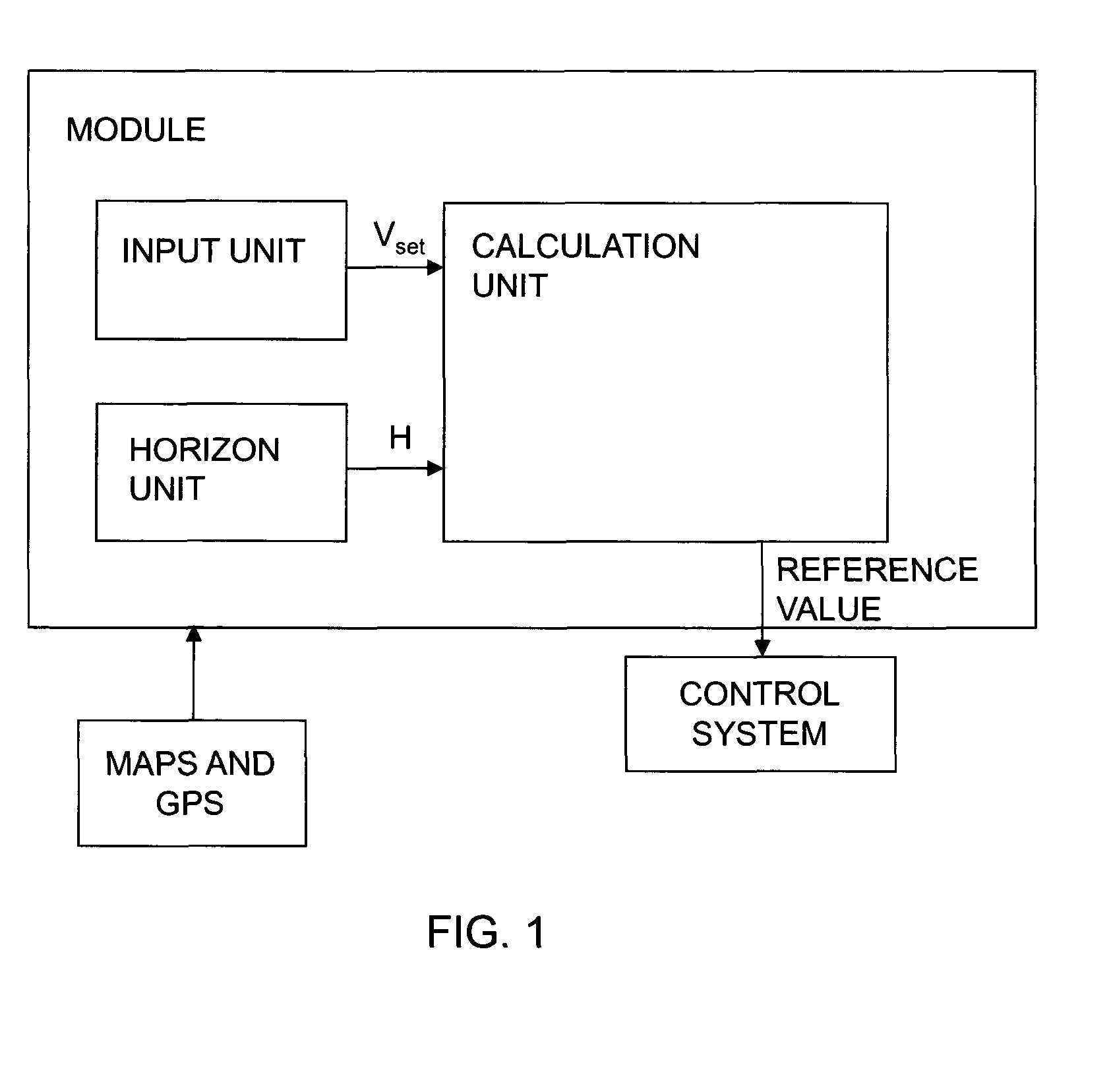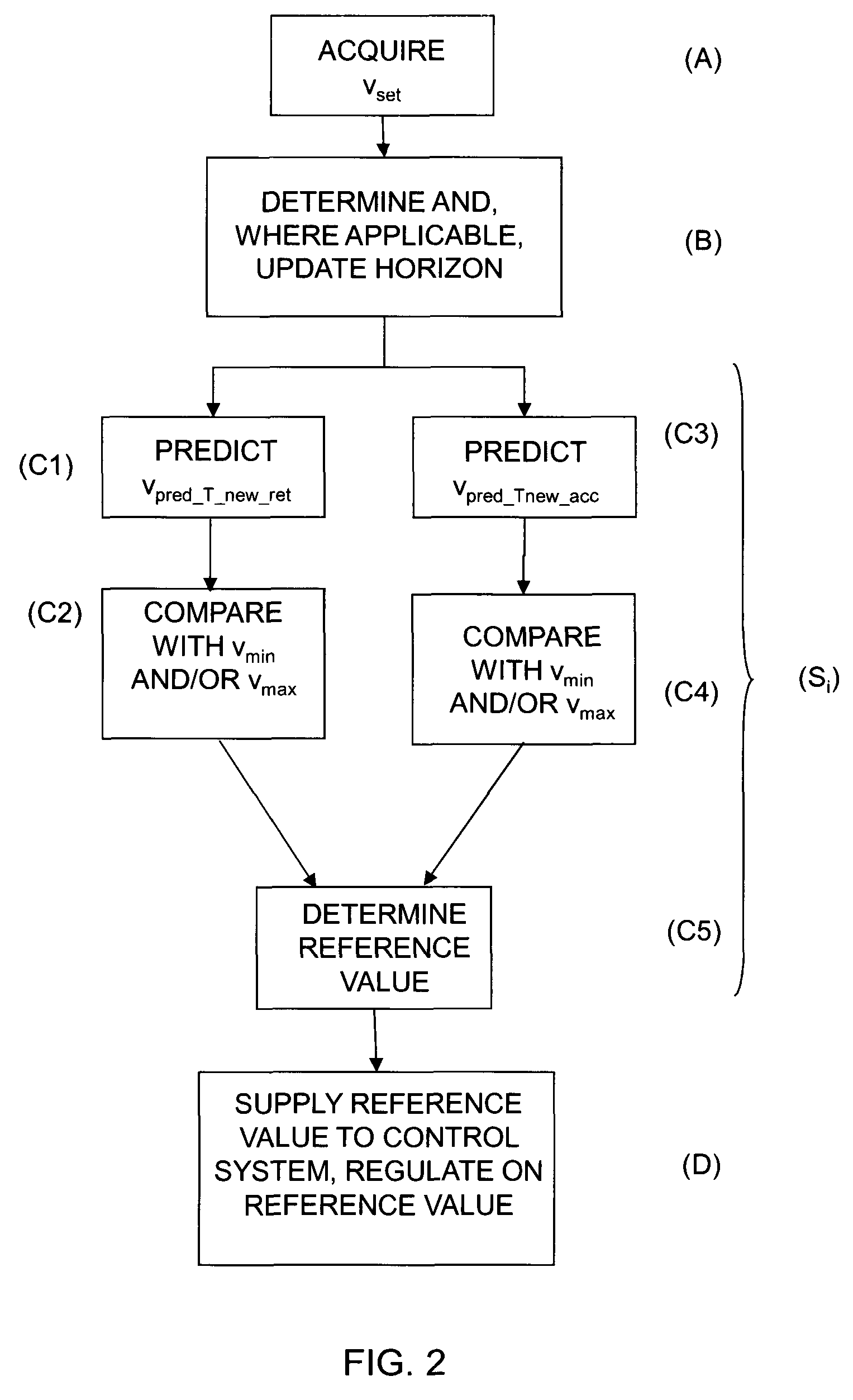Method and module for controlling a vehicle's speed based on rules and/or costs
a technology of vehicle speed and control module, applied in adaptive control, process and machine control, instruments, etc., can solve the problems of large processing capacity, high cost of driving vehicle, and vehicle acceleration over the crest of a hill, so as to reduce the amount of fuel used and reduce the load of the processor
- Summary
- Abstract
- Description
- Claims
- Application Information
AI Technical Summary
Benefits of technology
Problems solved by technology
Method used
Image
Examples
Embodiment Construction
[0040]FIG. 1 depicts a module for controlling a vehicle's speed according to an aspect of the invention. The module comprises an input unit adapted to receiving a desired speed, i.e. a set speed vset, for the vehicle. The driver may for example set a speed vset which he / she wishes the vehicle to maintain. The module comprises also a horizon unit adapted to determining a horizon H for the itinerary by means of map data and location data. The horizon H is made up of route segments with at least one characteristic for each segment. A possible example of characteristics of segments is their gradient α, in radians.
[0041]The description of the present invention states that GPS (global positioning system) is used to determine location data for the vehicle, but specialists will appreciate that other kinds of global or regional positioning systems are conceivable to provide these data. Such positioning systems might for example use radio receivers to determine the vehicle's location. The veh...
PUM
 Login to View More
Login to View More Abstract
Description
Claims
Application Information
 Login to View More
Login to View More - R&D
- Intellectual Property
- Life Sciences
- Materials
- Tech Scout
- Unparalleled Data Quality
- Higher Quality Content
- 60% Fewer Hallucinations
Browse by: Latest US Patents, China's latest patents, Technical Efficacy Thesaurus, Application Domain, Technology Topic, Popular Technical Reports.
© 2025 PatSnap. All rights reserved.Legal|Privacy policy|Modern Slavery Act Transparency Statement|Sitemap|About US| Contact US: help@patsnap.com



